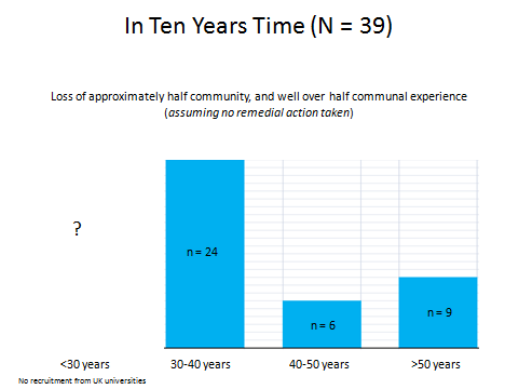
The Micropalaeontology Society was the first to recognise that this crisis existed and three years ago, following the closure of the UCL course, set about doing something about it. An Educational Trust Fund for the training of micropalaeontologists was established as a registered charity and the society is now bringing the need to train micropalaeontologists to the attention of both the industry which uses them daily and the broader geological community (please see letter attached). The Trust also has the brief to QA and accredit MSc and PhD training and to financially assist students on such courses. It can also provide tacit support to academic units and courses by the provision of project materials to students; these might include well samples and data, project supervision and course teaching by experienced staff.
If the hydrocarbon industry considered the value added by wellsite biostratigraphers then it might understand the need to train more. It’s been estimated1 that biosteering has brought benefits of savings of tens of millions of dollars in drilling wells, additions of tens of millions of barrels of reserves, and additions of tens of thousands of barrels per day of production (sustainable throughout field life). It has added value running into hundreds of millions of dollars. A number of contributing procedures besides wellsite biostratigraphy make up the geosteering process which is regarded as providing up to 30% additional yield on a production well2. A more conservative value of 10% could be attributed to wellsite biostratigraphy. Each horizontal well might have a life span of 5 to 10 years, during which time it could be producing at several thousand barrels of oil per day at a cost per barrel ranging between $80 and $115. It doesn’t take long to deduce that it’s worth having a few well trained biostratigraphers available.
The one glimmer on the horizon is that the concern generated by the Micropalaeontological Society has already resulted in the launch of a new Masters course in Applied and Petroleum Micropalaeontology at the University of Birmingham. The first students should arrive for this course in September, 2012. This course needs all the support it can get as it’s essential that it succeeds and a steady flow of graduate Micropalaeontologists is generated. So far the petroleum industry is showing a reluctance to finance this new course and the Micropalaeontological Society in its efforts to provide students with the necessary assistance to pay for ever rising tuition fees, etc.
There is an opportunity to defuse the demographic time bomb which will cause the drop in the numbers of biostratigraphers available to industry and, the other elephant in the room, climate change research. Perhaps in 5 to 10 years it won’t matter and the advent of alternative methods will mean that we won’t need micropalaeontologists any more; we were told that in the 1970’s and it was proved wrong then. Currently you can still call on a biostratigrapher to provide you with a relatively cheap and simple method of knowing what you’re drilling through. Unfortunately, there might not be one there in five to ten years time.
References
- Jones, R. W., Lowe, S., Milner, P. et al., 2005. The Role and Value of “Biosteering” in Hydrocarbon Reservoir Exploitation. Pp. 339-55, in Koutsoukos, E.A.M. (ed.): Applied Stratigraphy. Springer.
- Jones, R.W., 2011. Applications of Palaeontology – Techniques and Case Studies. Cambridge University Press.
*Network Stratigraphic Consulting Ltd., Harvest House, Cranborne Road, Potters Bar, Hertfordshire, EN6 3JF
** BG Group plc, 100 Thames Valley Park, Reading, Berkshire, RG6 1PT
*** The Micropalaeontological Society Educational Trust Fund